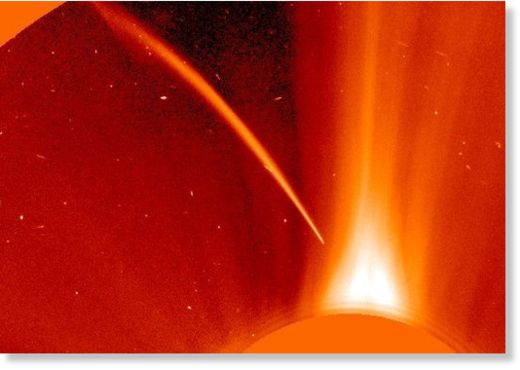
© NASAA Kreutz Sungrazer comet.
He spends most of his day at office and commuting to and from Mumbai in crowded suburban trains but accountant Shishir Deshmukh still finds time to look at the stars and pursue his passion for astronomy.
And he has just discovered his sixth comet in just nine months, the first by an Indian.
His latest discovery was a Kreutz Group comet Thursday evening.
"I feel very thrilled by my discoveries, the first by an Indian. It gives great pleasure. Although I am an amateur astronomer, I have made a small contribution to the world of astronomy," an excited Deshmukh, who works as an assistant accounts manager with a leading realty group, told IANS.
The Kreutz Group of comets is named after a German astronomer, Heinrich Kreutz, who discovered that these types of comets - which travel around the sun and consist of a solid frozen nucleus part and a long luminous tail - have their orbits very close to the sun.
"These comets are generally very fragile, barely a few metres long and keep disintegrating throughout their orbit," explained Deshmukh, a commerce graduate from the University of Mumbai with an M.Phil in information science.